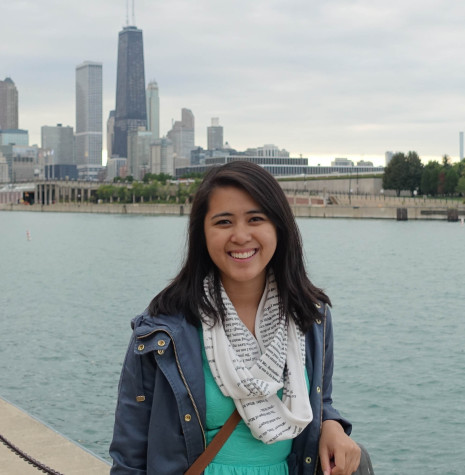Cleveland Foundation initiative looks to strengthen relationship between University Circle, East Cleveland
February 14, 2014
The eastern border of Cleveland has a split personality.
It’s home to University Circle, one of the wealthiest areas in Cleveland, but also borders East Cleveland, a suburb which ranks among the poorest in Ohio.
This has created a dichotomy between the residents of the majority of East Cleveland and the visitors who come to the Cleveland Museum of Art, Cleveland Botanical Garden and Severance Hall, to name a few of the attractions in University Circle. With the expansion of University Circle, the divide will only widen. The Greater University Circle Initiative (GUCI) is attempting to lessen the discrepancy and help the surrounding community take advantage of the resources available to them.
GUCI’s goal is to build a relationship between University Circle and East Cleveland. The initiative plans on making partnerships between many organizations, including Case Western Reserve University with the Social Justice Institute, as well as University Hospitals. GUCI has built graduate school housing on the border of East Cleveland as an experiment to see if people would want to live there. If the response is positive, then this will create opportunities for more housing for young professionals.
According to Brenda Mathias, a CWRU masters student working on the project, they have assessed what is currently available in East Cleveland and what is still needed. About 12 million dollars are invested to fund the necessary construction work. Multiple vacant properties and houses in the area need either demolition or repair, and a lack of fresh food is available to the community. East Clevelanders must leave the area in order to find a grocery store.
“We are trying to build a very fundamental community aspect,” says Mathias. “How do we get grocery stores? How do we get jobs?”
Unfortunately, looking at East Cleveland’s future from a broad perspective yields an uncertain conclusion. The overall response from possible investors has been negative. The current budget leaves the city’s government almost bankrupt. It is uncertain whether or not the community can survive off of grants and federal aid. Future investment would attempt to develop retail and revenue, not just red-light cameras and ticketing.
GUCI believes that East Cleveland has the opportunity to become what is essentially Harlem for an art’s renaissance.
“East Cleveland has a lot of idealistic, passionate people that want to bring the arts into Cleveland,” said Mathias. “We plan on bringing in art galleries and starting programs for the youth that are focused on the arts.”
The initiative hopes to mirror what occurred in New York City: tap into the fine arts, music and physical artwork talents in East Cleveland to bring people into the community.
The Northeast Ohio Alliance for Hope (NOAH) works with the Social Justice Institute and develops ideas for community investment through active participation in the community. GUCI plans on working with NOAH to preserve the character of East Cleveland and keep the wants and needs of the residents in mind.
NOAH has found that many residents fear gentrification. The building of new, big homes could cause a rise in prices for residents. Many of the community members would not be able to afford the goods and services they need, which would fare badly for the community as a whole. However, the main focus of GUCI is to fill Euclid Corridor with shops and businesses, bringing people through East Cleveland and increasing investment. As of now, not enough people move in and out of the area on a daily basis for shops to want to set up along Euclid.
“There was a period called the ‘White Flight,’ in which the population of East Cleveland switched from largely Caucasian to almost all African American,” says Mathias. “This period took place in the span of two years. People that live in the area saw this happen.”
According to Mathias, East Cleveland is now prime for development, but positive qualities of the area must be featured to draw people in. The area that used to be a booming center with the famed Millionaire’s Row has become a large, traditional community. This community is what defines East Cleveland, and NOAH and the Social Justice Institute have been working to get the stories of these residents.
CWRU’s advancements helped both GUCI and East Cleveland. In order for GUCI to figure out what East Clevelanders want and need, the Mandel School of Applied Social Sciences worked on developing different scenarios to present to the community. These scenarios reveal what resources are lacking in the area. The Global Scholars Initiative has professors from CWRU act as mentors to the high school students in East Cleveland.
GUCI exists to help make sure that the expansion of University Circle does not leave out the rest of East Cleveland. Although there are many unknown variables and conflict in the area, GUCI strives to give East Cleveland the help it needs.


